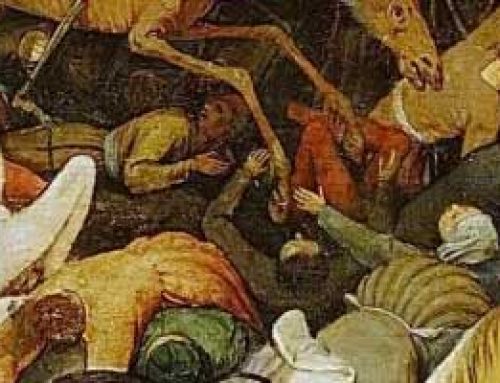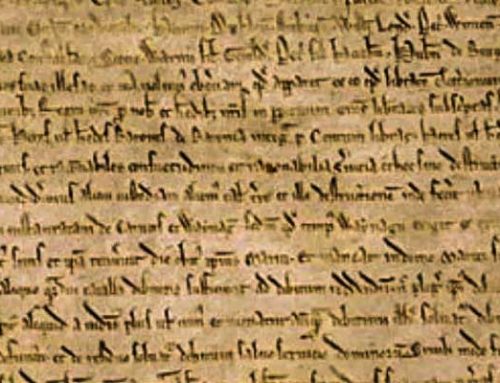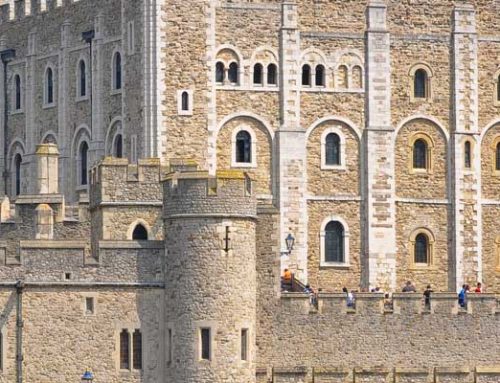By 285, the Roman Empire had become too big for one ruler to manage. Conflicts among the many cultures of the Empire developed into several wars, so Emperor Diocletian appointed a sub-emperor, called a Caesar, to rule the western half of the Empire.
Diocletian ruled the eastern half, indicating that the east was the Empire’s more prosperous, more stable portion. While the west was prone to frequent attacks from barbarian tribes and relied heavily on agriculture, the eastern Empire had a mixed economy and was more secure.
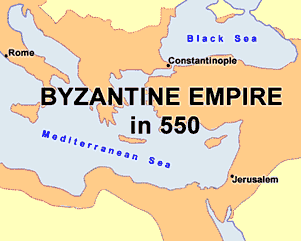
703byzantine_550
The Byzantine was the continuation of the Roman Empire in the East until 1453, when it fell to Turkish warriors.
Constantine moved his capital from Rome to the Greek city of Byzantium in 330. Constantine wanted his capital to be safe from barbarian invasion, so he chose a location at the end of a high peninsula surrounded by water on three sides. Byzantium was located on the Bosporus Strait, a narrow waterway that connects the Black Sea to the Mediterranean Sea.
Byzantium was initially called New Rome when it became the Empire’s capital, but in time the city became known as Constantinople, which means “Constantine’s city.” Constantinople became a trading center, and people from faraway lands traveled there to conduct business, making it one of the world’s most important cities.
The emperors who followed Constantine considered themselves to be Roman. Modern scholars describe the Eastern Empire as the Byzantine Empire, particularly after the fall of Rome in 476. Byzantine refers to the original name of Constantine’s capital, Byzantium.
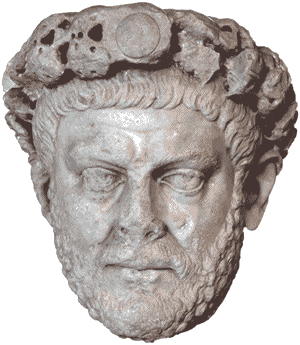
Diocletian
Diocletian was Emperor of Rome from 284 to 305CE. In 285, he appointed a Caesar to rule the western half of the empire.
In 800, Pope Leo I crowned Charlemagne Holy Roman Emperor. Byzantine leaders considered Charlemagne’s coronation an insult; they considered themselves rulers of Christendom and the Roman Empire. The disagreements between east and west continued for centuries leading to a schism or separation from the church. After 1054, many Eastern Churches no longer acknowledged the Pope, while the Western Roman Catholic Church accepted the Pope as the leader of their faith.
The Byzantine Empire began to look less like the Roman Empire as the years passed. The Empire covered present-day Greece, the Balkans, Asia Minor, Syria, and Egypt. By the seventh century, Greek had entirely replaced Latin as the language of the Empire.
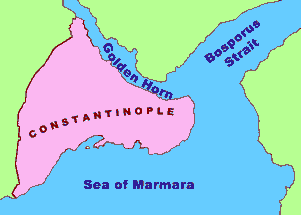
Constantinople_map
Constantinople is located on a well defended peninsula. The Bosporus Strait leads to the Black Sea, while the Sea of Marmara leads to the Mediterranean Sea.
In the middle of the 11th century, the borders of the Byzantine Empire began to be overrun by Turks. The Turks had recently converted to Islam, and the Byzantine emperor feared the Muslims would soon overpower his Christian Empire. The emperor asked the Pope— the leader of the Western Christian church—to assist in a holy war against the Turks.
In 1095, Pope Urban II launched the first of many Crusades, or “wars of the cross.” Urban hoped that in addition to expelling the Turks from the Byzantine Empire, he would also be able to reclaim the holy city of Jerusalem from Muslim control. Western European soldiers left their homes to free the Byzantine Empire of the “unbelievers.” Their exposure to new and different cultures was a factor that would eventually lead to the Renaissance centuries later.
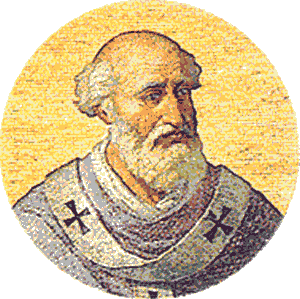
Pope_Urban_II
In 1095, Pope Urban II launched the first of many Crusades, or “wars of the cross.”
Christian warriors captured Jerusalem in 1099, but a Kurdish warrior named Saladin reclaimed the land for Islam in 1187. Crusaders continued for fight nearly two hundred years, and ultimately the Christian warriors were unsuccessful.
The Turkish Ottoman Empire eventually conquered most Byzantine land. Constantinople fell to the Turks in 1453. The Turks called the city Istanbul, which means “the marketplace,” but the Turkish government did not make the change official until 1930. Turkish has replaced Greek as the language of Asia Minor, and today, more than 99% of the people in modern Turkey are Muslims.
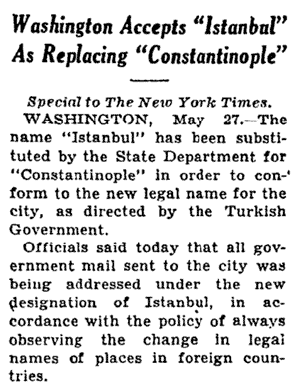
New York Times article from 1930 stating the State Department recognized Istanbul as the recognized name of what was once Constantinople.
Resources
Download this lesson as Microsoft Word file or as an Adobe Acrobat file.
Listen as Mr. Dowling reads this lesson.
Mr. Donn has an excellent website that includes a section on the Middle Ages.
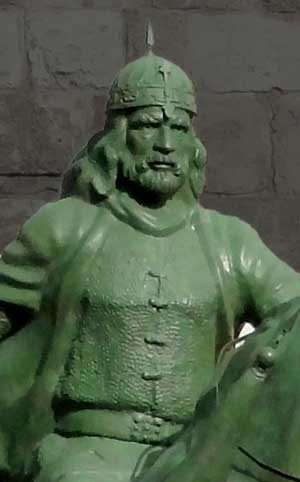
Saladin
Saladin (1137 – 1193) was a Kurdish warrior who led the Muslim military campaign against the Crusader states. A bronze statue in Damascus was unveiled to commemorate the 800th anniversary of his death.


